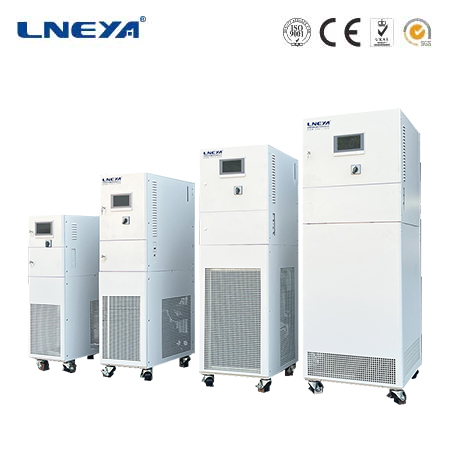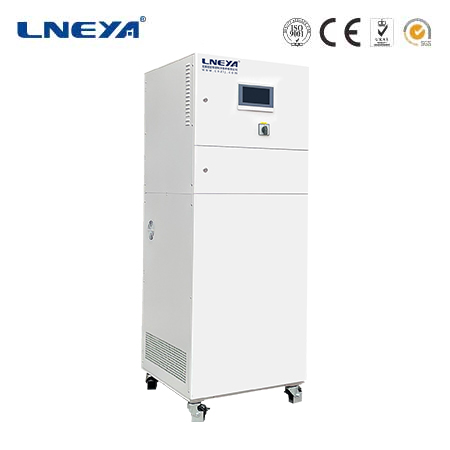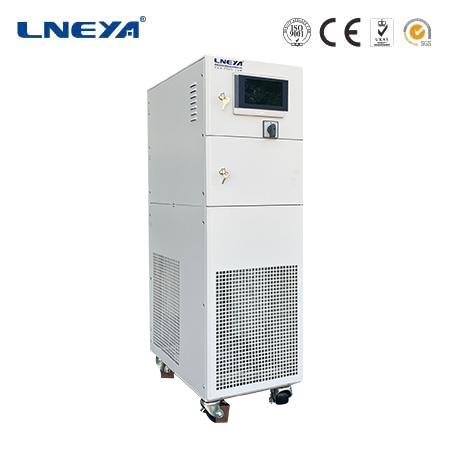compact chillers
In many modern settings, the need for efficient cooling solutions within limited spaces has led to the development and widespread use of compact chillers. These specialized cooling units are engineered to provide effective cooling while occupying minimal floor area or space within a building’s infrastructure. Compact chillers are not merely scaled – down versions of their larger counterparts; they are designed with unique features to meet the specific requirements of applications where space is at a premium.

Design and Components of Compact Chillers
Compressors
The compressor in a compact chiller is a crucial component, responsible for compressing the refrigerant to increase its pressure and temperature. Compact chillers often use reciprocating or scroll compressors.
Reciprocating Compressors: These compressors operate using a piston – cylinder mechanism. In compact chillers, reciprocating compressors are suitable for small – to – medium – capacity applications. They can handle a variety of refrigerants and have a relatively simple construction, which makes them cost – effective for compact designs. However, they may produce more vibration and noise compared to some other compressor types, but in compact chiller applications where the unit is often installed in areas away from noise – sensitive zones, this can be managed.
Scroll Compressors: Scroll compressors in compact chillers consist of two interleaved spiral – shaped scrolls. One scroll is fixed, and the other orbits around it to compress the refrigerant. They are known for their quiet operation, high efficiency at partial loads, and are a popular choice in compact chiller designs. Their compact size and smooth operation make them well – suited for applications where space and noise reduction are important, such as in small commercial offices or laboratories.
Condensers
Condensers in compact chillers are designed to transfer the heat from the high – pressure, high – temperature refrigerant vapor to a cooling medium. There are two main types of condensers used in compact chillers.
Air – Cooled Condensers: Air – cooled condensers in compact chillers use ambient air to cool the refrigerant. They are relatively easy to install and maintain, especially in applications where access to a water source for cooling is limited. The condenser typically consists of finned tubes through which the refrigerant vapor flows, and ambient air is forced over the fins by a fan. However, their efficiency can be affected by high ambient temperatures. In areas with hot climates, the performance of air – cooled condensers in compact chillers may decline as the temperature difference between the refrigerant and the ambient air decreases, making heat rejection more difficult.
Water – Cooled Condensers: Water – cooled condensers in compact chillers use water as the cooling medium. Water has a higher specific heat capacity than air, allowing for more efficient heat transfer. These condensers are often used in applications where higher cooling capacities are required within a compact design. In a water – cooled compact chiller, the condenser is usually a shell – and – tube heat exchanger, where the refrigerant vapor flows through the tubes, and water flows through the shell. The use of water – cooled condensers in compact chillers may require a connection to a water source and a means of heat dissipation for the warm water, such as a small – scale cooling tower or a heat exchanger with a secondary cooling loop.

Evaporators
Evaporators in compact chillers are where the heat transfer process occurs to cool the fluid that needs to be chilled.
Dry – Expansion Evaporators: Dry – expansion evaporators are commonly used in compact chillers. In this type of evaporator, the refrigerant boils inside the tubes, and the fluid being cooled (such as water or air) flows over the outside of the tubes. The design of the evaporator is optimized to maximize the surface area in contact between the refrigerant and the fluid being cooled. Finned tubes are often used to increase the heat – transfer area. Dry – expansion evaporators in compact chillers are simple in design and effective in cooling the process fluid.
Flooded Evaporators: Although less common in compact chillers compared to dry – expansion evaporators, flooded evaporators can also be used in some applications. Flooded evaporators are filled with liquid refrigerant, and the heat – transfer surface is constantly wetted. They offer high heat – transfer coefficients, but they require additional components to separate the liquid and vapor phases of the refrigerant. In a compact chiller, the use of a flooded evaporator may be considered in applications where very high cooling loads need to be met within a compact space and where the additional complexity of the liquid – vapor separation components can be accommodated.
Expansion Devices
Expansion devices in compact chillers regulate the flow of the high – pressure liquid refrigerant into the evaporator and reduce its pressure.
Thermal Expansion Valves: Thermal expansion valves are widely used in compact chillers. They adjust the refrigerant flow based on the temperature of the refrigerant leaving the evaporator. This ensures proper refrigerant distribution and efficient operation of the chiller. In a compact chiller, the thermal expansion valve is carefully sized to match the capacity of the unit and the characteristics of the refrigerant used.
Capillary Tubes: Capillary tubes are also used in some compact chillers, especially in smaller – capacity units or in applications where precise control of refrigerant flow is not as critical. Capillary tubes are simple and inexpensive expansion devices. They rely on the resistance of a small – diameter tube to reduce the pressure of the refrigerant as it flows through.
Types of Compact Chillers
Air – Cooled Compact Chillers
Air – cooled compact chillers are a popular choice in many applications due to their simplicity and ease of installation. They are ideal for applications where access to a water source for cooling is limited or not practical. For example, in small – scale commercial kitchens, air – cooled compact chillers can be used to cool the water used in ice – making machines or to maintain the temperature of food storage areas. They are also commonly used in small offices, where they can provide cooling for server rooms or to supplement the building’s air – conditioning system in specific areas. However, as mentioned earlier, their performance can be affected by high ambient temperatures, so they are more suitable for use in moderate – climate regions or in applications where the heat load is not extremely high.

Water – Cooled Compact Chillers
Water – cooled compact chillers are designed for applications where higher cooling capacities are required within a compact footprint. They are often used in industrial processes where precise temperature control is crucial, such as in some manufacturing operations or in laboratories. In a laboratory setting, a water – cooled compact chiller can be used to cool equipment such as lasers, which generate a significant amount of heat during operation. Water – cooled compact chillers are also used in some small – to – medium – sized data centers, where they can efficiently remove the heat generated by servers. Although they require a water source and a means of heat dissipation for the warm water, their higher efficiency in heat transfer compared to air – cooled compact chillers makes them a viable option in applications where these requirements can be met.
Applications of Compact Chillers
Small – to – Medium – Sized Commercial Establishments
In small – to – medium – sized commercial establishments such as restaurants, cafes, and small retail stores, compact chillers play a vital role. In a restaurant, a compact chiller can be used to cool the water used in the kitchen for food preparation, as well as to maintain the temperature of refrigerated display cases for food and beverages. In a small retail store, a compact chiller can be used to cool the air in a specific area, such as a stockroom where temperature – sensitive products are stored. Compact chillers are also used in small hotels to provide cooling for individual rooms or for specific areas such as the hotel’s laundry room.
Laboratories
Laboratories often require precise temperature control for various equipment and experiments. Compact chillers are used to cool equipment such as centrifuges, spectrometers, and incubators. In a medical laboratory, a compact chiller may be used to cool the reagents or samples that need to be stored at specific low temperatures. The compact size of these chillers allows them to be easily integrated into the laboratory’s infrastructure, and their ability to provide precise temperature control is essential for the accurate results of experiments.
Some Industrial Processes
In some industrial processes, compact chillers are used to control the temperature of specific components or processes. In the electronics manufacturing industry, compact chillers can be used to cool the molds used in plastic injection molding. By maintaining a precise temperature in the molds, the quality of the plastic parts produced can be improved. In the printing industry, compact chillers can be used to cool the ink – drying systems, ensuring that the ink dries evenly and quickly. These industrial applications require compact chillers that can provide reliable and precise cooling within the limited space available in industrial facilities.
Advantages of Compact Chilllers
Space – Saving Design
The most obvious advantage of compact chillers is their space – saving design. In applications where floor space or available installation space is limited, compact chillers can be easily installed in corners, on rooftops, or in small mechanical rooms. Their small footprint allows businesses and industries to add cooling capacity without having to make significant modifications to the building’s layout. This is particularly beneficial in urban areas where space is at a premium or in older buildings with limited mechanical space.
Easy Installation
Compact chillers are generally easier to install compared to larger, more complex chiller systems. They often come as pre – assembled units, which reduces the installation time and complexity. In many cases, they can be installed by a small team of technicians without the need for specialized heavy – equipment. For example, an air – cooled compact chiller can be simply placed in the desired location, connected to the electrical supply, and the refrigerant lines can be quickly hooked up. This ease of installation also means that the initial investment in installation costs is relatively low.
Lower Initial Costs
The cost of a compact chiller is generally lower compared to larger – scale chiller systems. This is due to their smaller size, simpler design, and the use of fewer components in some cases. For small – to – medium – sized businesses or applications with limited budgets, compact chillers offer an affordable cooling solution. The lower initial cost also extends to the installation and commissioning process, as mentioned earlier. However, it’s important to note that while the initial cost may be lower, the long – term operating costs, such as energy consumption, need to be considered when evaluating the overall cost – effectiveness of a compact chiller.
Energy – Efficient in Appropriate Settings
In applications where the cooling load is relatively small and well – matched to the capacity of the compact chiller, these units can be energy – efficient. For example, in a small office with a specific area that needs to be cooled, a compact chiller can operate at a high efficiency as it is not over – sized for the load. Some compact chillers are also equipped with energy – saving features such as variable – speed drives for the compressor and fans. These features allow the chiller to adjust its operation based on the actual cooling demand, further reducing energy consumption.
Limitations of Compact Chillers
Cooling Capacity Limitations
One of the main limitations of compact chillers is their relatively lower cooling capacity compared to large – scale industrial chillers. While they are designed to meet the cooling needs of small – to – medium – sized applications, they may not be suitable for applications with extremely high heat loads. For example, a large – scale manufacturing plant with a significant amount of heat – generating equipment may require a large – capacity chiller system, and a compact chiller would not be able to provide sufficient cooling. In such cases, multiple compact chillers may need to be installed in parallel, which can increase the complexity and cost of the cooling system.
Performance in Extreme Conditions
As mentioned earlier, air – cooled compact chillers can experience a decline in performance in high – temperature environments. In extremely hot climates, the efficiency of the air – cooled condenser may drop significantly, leading to reduced cooling capacity and increased energy consumption. Water – cooled compact chillers, on the other hand, may face challenges in areas with limited water availability or poor water quality. If the water source for a water – cooled compact chiller is not reliable or if the water contains a high level of impurities, it can cause scaling and corrosion in the condenser, reducing the chiller’s performance and lifespan.
Maintenance of Compact Chillers
Regular Component Inspection
Regular inspection of the components of a compact chiller is essential for its proper operation. The compressor, condenser, and evaporator should be checked for signs of wear, corrosion, or damage. For example, the fins of the air – cooled condenser should be inspected for dirt and debris accumulation, as this can reduce the heat – transfer efficiency. In a water – cooled condenser, the tubes should be checked for signs of scaling or blockage. The compressor’s performance can be monitored by checking the pressure and temperature of the refrigerant at the inlet and outlet of the compressor.
Refrigerant Level and Quality Check
Monitoring the refrigerant level and its quality is crucial for the efficient operation of a compact chiller. Low refrigerant levels can lead to reduced cooling capacity, and contaminated refrigerant can cause damage to the compressor and other components. Regularly checking the refrigerant level using appropriate gauges and ensuring that the refrigerant is free from moisture and contaminants is an important maintenance task. If a refrigerant leak is detected, it should be repaired promptly to prevent further loss of refrigerant and potential damage to the environment.
Lubrication and Cleaning
Proper lubrication of the moving parts of the compact chiller, such as the compressor bearings and the fan motors, is essential to reduce friction and wear. Regular cleaning of the unit, including the removal of dust and debris from the air – intake and exhaust vents, helps to maintain efficient operation. In a water – cooled compact chiller, the water – side of the condenser may need to be cleaned periodically to remove any deposits that can affect heat transfer.
Control System Calibration
The control system of a compact chiller should be calibrated regularly to ensure accurate temperature control. Malfunctioning sensors or controllers can lead to improper operation of the chiller, such as over – cooling or under – cooling. Calibrating the temperature sensors and ensuring that the control algorithms are working correctly helps to maintain the desired cooling performance and energy efficiency of the compact chiller.
In conclusion, compact chillers are a valuable cooling solution for a wide range of applications where space is limited. They offer several advantages such as space – saving design, easy installation, and lower initial costs. However, they also have limitations, particularly in terms of cooling capacity and performance in extreme conditions. By understanding their design, components, types, applications, advantages, and maintenance requirements, businesses and industries can make informed decisions on whether a compact chiller is the right cooling solution for their specific needs.
Related recommendations
small industrial water chiller
237Small Industrial Water Chillers: Efficient Cooling for Manufacturing Processes Small industrial water chillers play a critical role in maintaining precise temperature control in a variety of ma...
View detailscirculating water bath heater
258Circulating Water Bath Heaters: Precision Temperature Control for Diverse Applications Introduction to Circulating Water Bath Heaters Circulating water bath heaters play a crucial role in va...
View detailsglycol cooler unit
67Glycol Cooler Unit: A Comprehensive OverviewA glycol cooler unit is a specialized piece of equipment that plays a vital role in heat transfer processes across different sectors. At its core, it ut...
View detailswater to water chiller
22Introduction Water to water chillers are sophisticated systems designed to transfer heat from one water source (the warm water) to another (the cool water), thereby reducing the temperature of...
View details
 LNEYA Thermal Test Chillers
LNEYA Thermal Test Chillers







HelloPlease log in